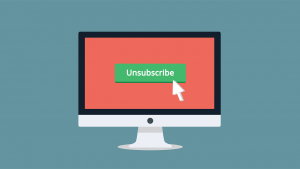We’ve all been there. You go to Target to pick up a few necessities and you come home with enough new throw pillows to cover your entire couch. Or you head to a discount department store, telling yourself you’re only going to pick up those socks you need, and you end up with the most beautiful pair of shoes, which were half off and just calling out to you. Or maybe you are the type to grab the latest gadget as soon as you see it at the store…
Yep, we all know what it’s like to impulse buy and, while it might feel fun when you’re in the moment, it’s generally not so fun when you get your credit card bill at the end of the month and it’s double what you budgeted for. In fact, one survey found that 44% of people reported feeling regretful after an impulse buy, so why do we keep making these purchases, how much damage do they actually do, and how can you keep your impulse buying to a minimum?
It All Adds Up

If you have been filling your cart with things that are, well, less than essential, you are certainly not alone: 90% of Americans admit to impulse buying (and those are the ones that admit it!), and a Slickdeals survey found that the average American spent an average of $182.98 per month on impulse purchases this past year, up 18% from pre-pandemic spending levels of roughly $155.03 per month. If those numbers sound high, consider this: that $182.98 is down from $450 per month in 2018!
Or maybe you’re thinking, “Ok, $183, or $6 a day – that’s not so bad, right?” Well, look at it this way: that adds up to almost an extra $2,300 dollars a year! Those impulse buys can really add up, and end up damaging your financial health: if you can only pay the minimum balance on your credit card each month, you’ll get hit with interest payments, and you could fall into debt. And if you fall behind on payments, there’ll be more fees piled onto your bills, as well as serious damage to your credit score.
To put an even finer point on it, if you were to invest $183 a month for 10 years at an 11% rate of return, you’d have over $39,000; even if you invested just $150 per month for 10 years at an 8% rate of return, you’d have almost $27,500! But, unfortunately, that’s not always the way we think about the money burning a hole in our pockets, or more accurately, those credit cards just itching to be used, and we end up grabbing things we don’t need off the shelf for a variety of other reasons.
Why Do We Do It?
The answer to the question above might seem to be simply: because we can! But there’s probably more going on when it comes to our impulsive buying habits – lots of things come into play, like:
- We’re feeling feelings – If you’re down, stressed, anxious, feeling unhappy with yourself, or even bored, you’re definitely more vulnerable to impulse buys, because shopping actually lights up our brains’ reward centers. Says Alexandra Emery, licensed psychologist at Grit City Psychology in Seattle, “Impulse buying gives us a little spike of dopamine, which is rewarding and motivating.” “Retail therapy” is a real thing, apparently, although it isn’t really very therapeutic in the long run – beware of the vicious cycle of shopping when stressed and then getting more stressed when you realize you’ve gone over budget!
- We tell ourselves we’re getting a great deal – According to the Slickdeals survey, more than half of the respondents said they make impulse purchases because of a sale. And sure, how can you resist buying something when it’s 75% off? Well, it’s not such a great deal if you’re spending money on something you didn’t intend to spend money on, and don’t actually need. Sales (and free shipping promotions) are marketing tactics, and are meant to make it easier for you to part with your money.
- You’ve learned to do it – In a 2019 survey conducted by TD Ameritrade, most of the respondents said that they way their parents handled money is the biggest influence on how they shop, so if you feel like you haven’t had a healthy and robust financial education, it might time to bone up on your budgeting.
How to Keep Impulse Buying at Bay
The urge to buy can be pretty powerful, but there are some strategies you can use to limit your impulse purchasing. Try the following:
- Make a list and check it twice – Ok, this one’s an oldie but still a goodie: make your shopping list and stick to it!
- Calculate the real cost of a purchase – The price of an item that you’re impulsively buying isn’t just a number on a tag or a screen, it represents your precious time. For example, if you earn $25/hour after taxes, and you buy a $250 suit, pair of shoes, or new gadget, that item actually cost you 10 hours of work.
- Do leave home without it – Remember that old commercial for American Express credit cards: “Don’t leave home without it”? There’s a reason they wanted you to keep your flexible friend with you at all times: you’re actually more likely to spend money on credit than you are when you’re using cash. In fact, credit card users spend 83% more on a given purchase than cash users do! So consider leaving the cards at home, or if online spending is your problem, don’t save your card info on shopping sites (it’s too easy!), or even consider freezing your cards if you really need to cool it.
- Be careful on social media – These days, companies trying to get us to buy their stuff can bombard us at all hours of the day, popping up on our social media news feeds and in banner ads everywhere we look. And if you’re thinking, “Who buys things off those Facebook ads?” the answer is apparently 55% of consumers! It’s easy to be influenced by all the ads for sales and product placements on social media, so be careful how you spend your time there.
- Avoid shopping with others – Sure, it’s definitely way more fun to shop with someone else, but if you’re out and about with your partner or friends, you’re all more likely to encourage each other to make impulse purchases. No one’s saying you can never go on a shopping trip with someone else, but plan it as part of your budget when you’re more financially sound.

- Have a waiting period – Do you really need that? If there’s a question in your mind, then take that moment of hesitation to put it down, and go home (or close the browser tab or app) and sleep on it. Try to extend the waiting period for as long as possible, so you’re more likely to lose interest in the item – some people even advocate for having a running 30-day waiting list for things you want, but a good rule of thumb is to give yourself at least 24 hours. You can even use this time to do some comparison shopping if it’s something you really think you’re going to end up purchasing.
- Don’t drink and shop! – You’re probably not drunk at the mall stumbling around buying stuff (ok, we don’t know what you do on the weekends) – that would be a terrible idea. Well, it’s also a terrible idea to hop onto Amazon late at night after you’ve had a few – you never know what will turn up at your door in two days (and again, be careful with the lure of free shipping – it can really get you!). The same also goes for shopping when you’re sad, lonely, hungry, or tired; strong feelings and shopping just don’t mix.
- Limit online shopping – And while we’re on the subject, it might actually be a good idea to limit as much online shopping as possible, as it’s just too tempting and too easy. If you’re a notorious online impulse buyer, try doing some of your shopping in-person, so you can actually hold the item, make sure it’s what you want, and so that you have to physically hand over your money. Also, delete those apps! Make it harder on yourself by having to – gasp! – go to the store’s website.

- Unsubscribe! – Does your email inbox look like a who’s who of online shopping sites? Those newsletters coming to you are a great way to find out about sales…on more stuff you don’t need! That’s the point of them, so click unsubscribe, take a deep breath, and let your FOMO go.
- Be clear about your goals – Don’t just think about why you’re saving, write it down. Get weird and write your financial goals in Sharpie on your credit and debit cards, or make them your screensaver or the background wallpaper on your phone
- Give yourself some wiggle room – If all of this sounds just too severe for you, and you’re already feeling stressed enough to pull out your credit card and fire up your favorite shopping app, stop! We’re not saying you can never buy anything you don’t need, we’re just saying you need to be smart about it. After all, healthy spending can be like healthy eating: if you’re too strict with yourself, it’ll end up discouraging you from sticking to healthy habits. So try creating a separate fund that can offset your occasional impulse buys, or create your budget in a way that allows for some splurging.
When it comes to your shopping habits, remember to think about how you’re feeling – if your gut is telling you you shouldn’t be spending, listen to it! But, on the other hand, remember to show yourself compassion, too, and not to go down a shame spiral because of your spending habits. As Joyce Marter, licensed psychotherapist and author of The Financial Mindset Fix, points out: “We are not our bank account; we are not our debt. That’s how we are, not who we are.” The point of all of this is not to take any fun out of your life; it’s to try to create healthier spending habits, so you can have money for the really important things, while still being able to enjoy yourself when the opportunity presents itself.
